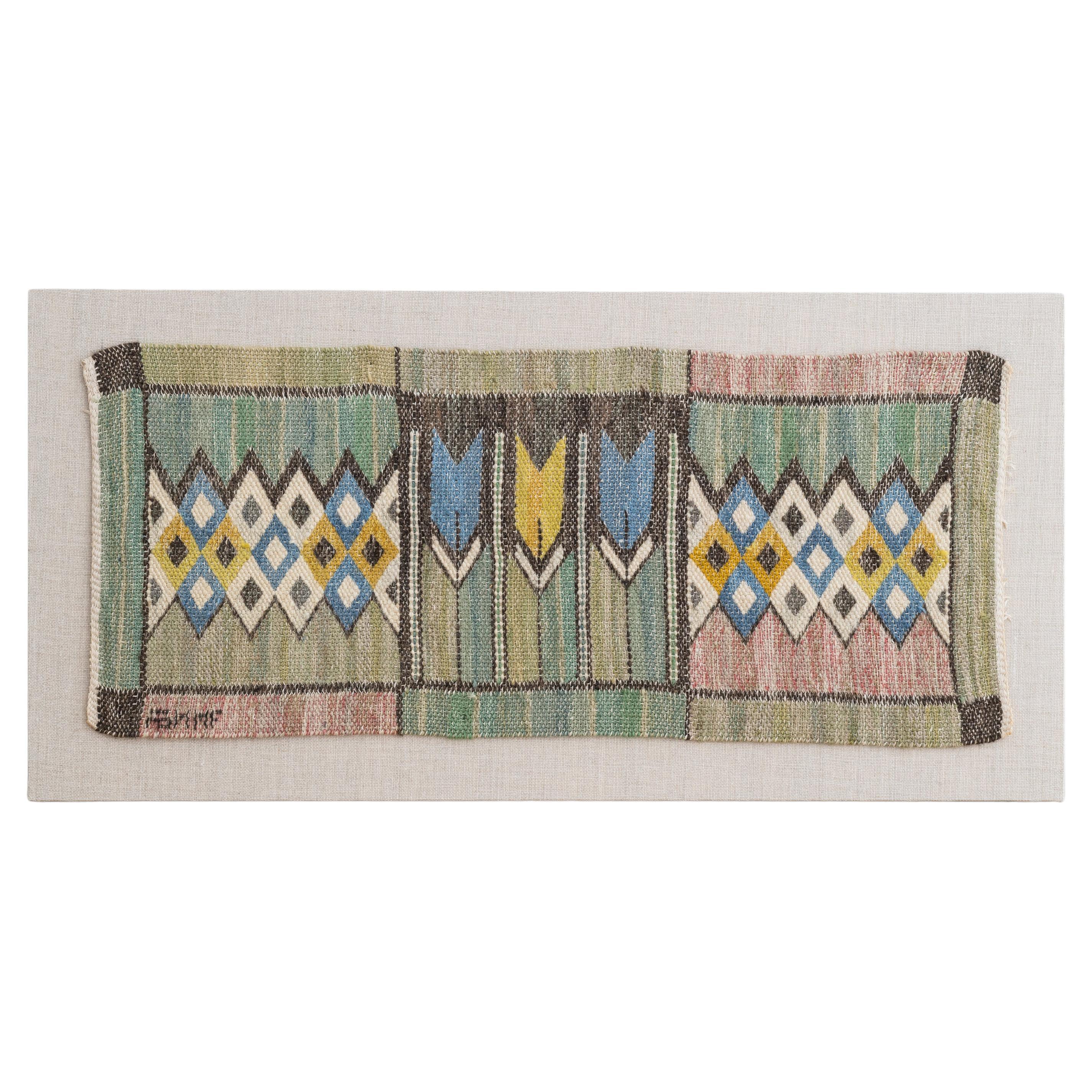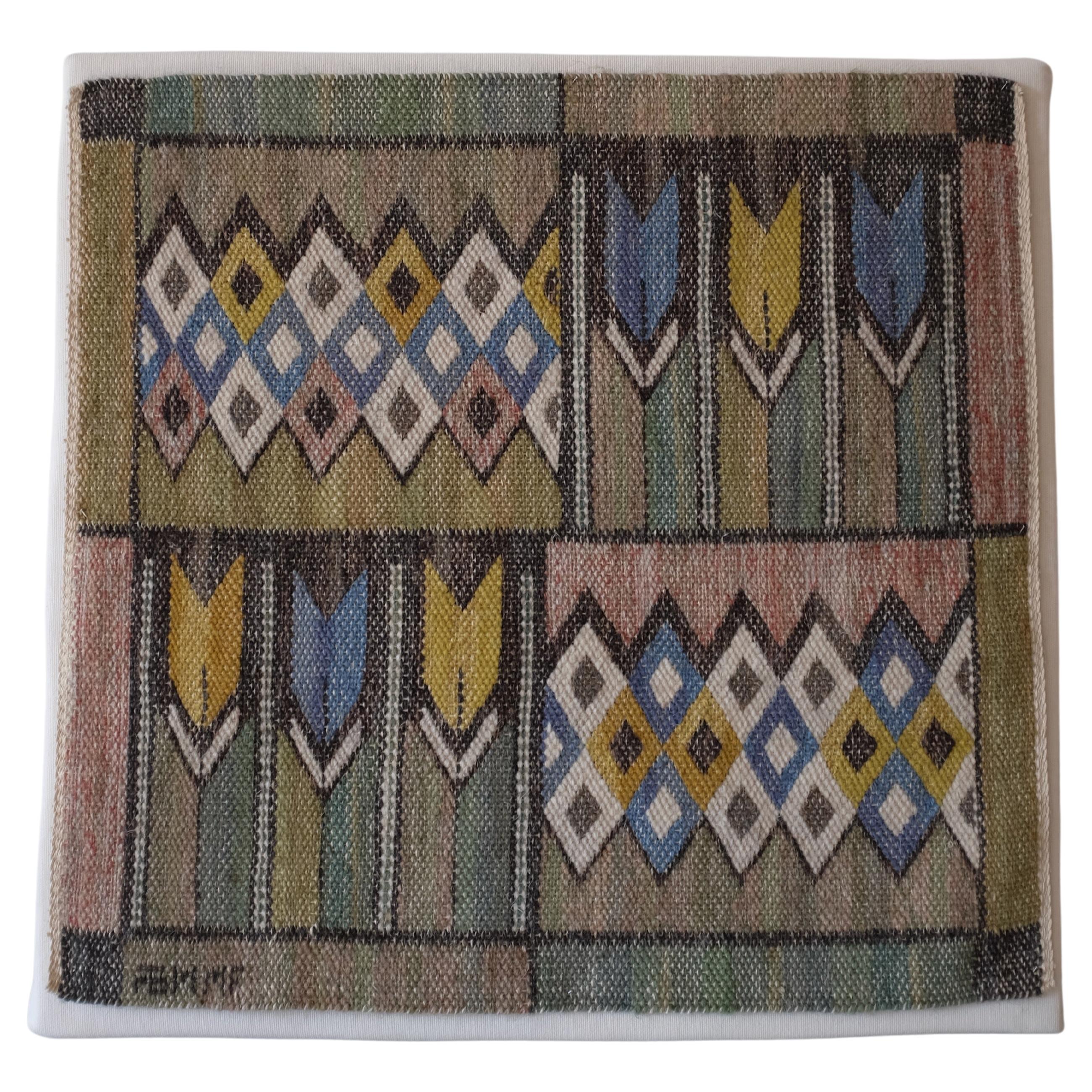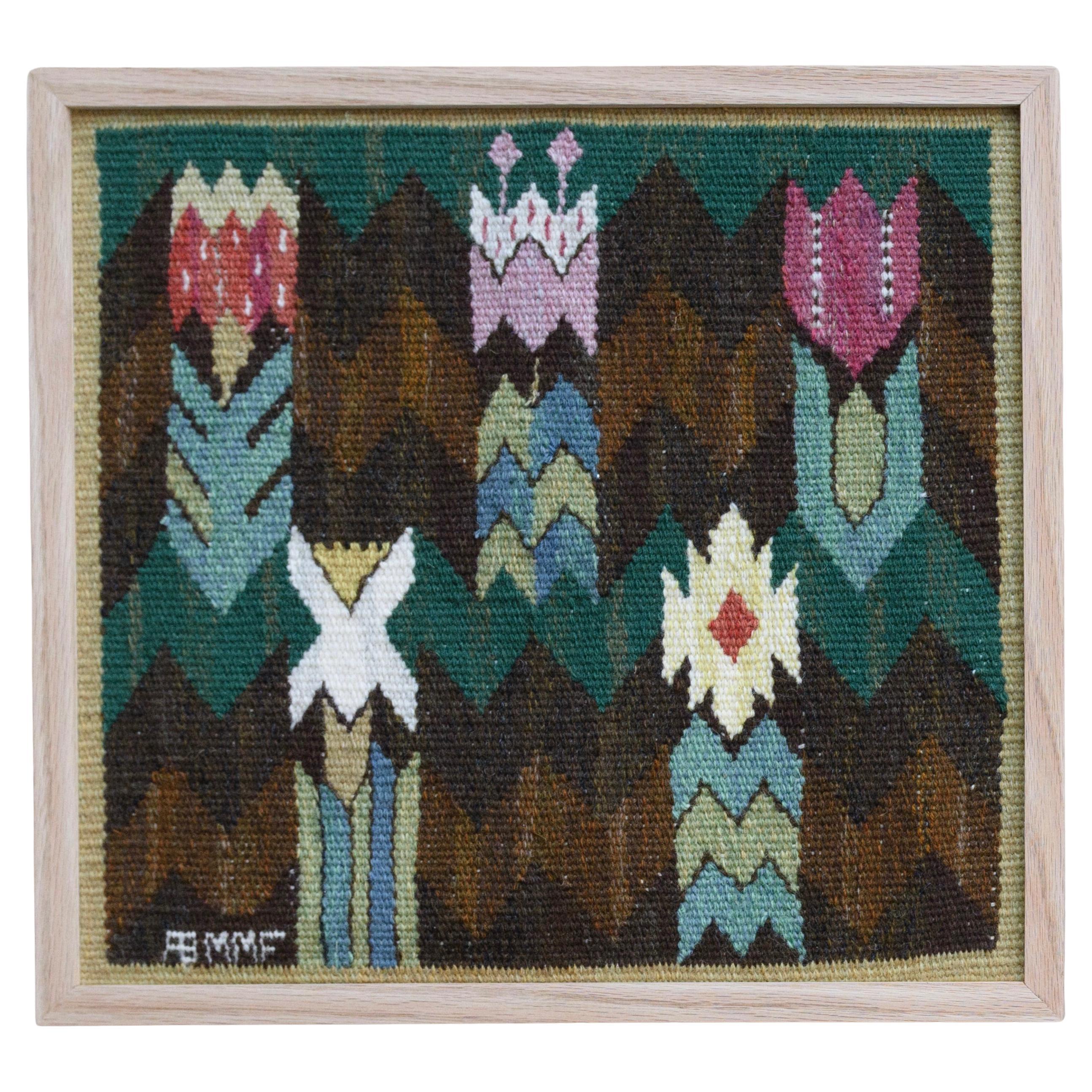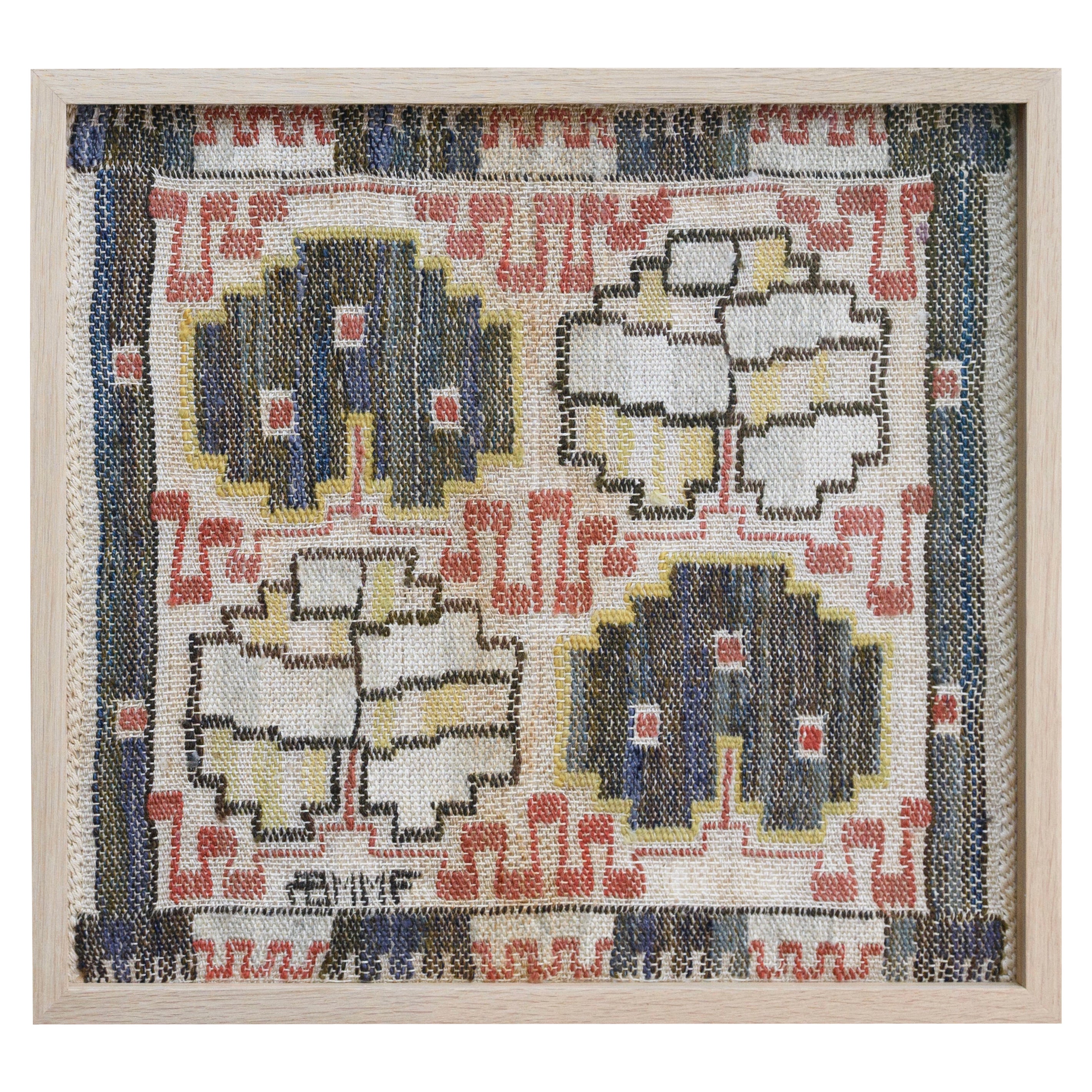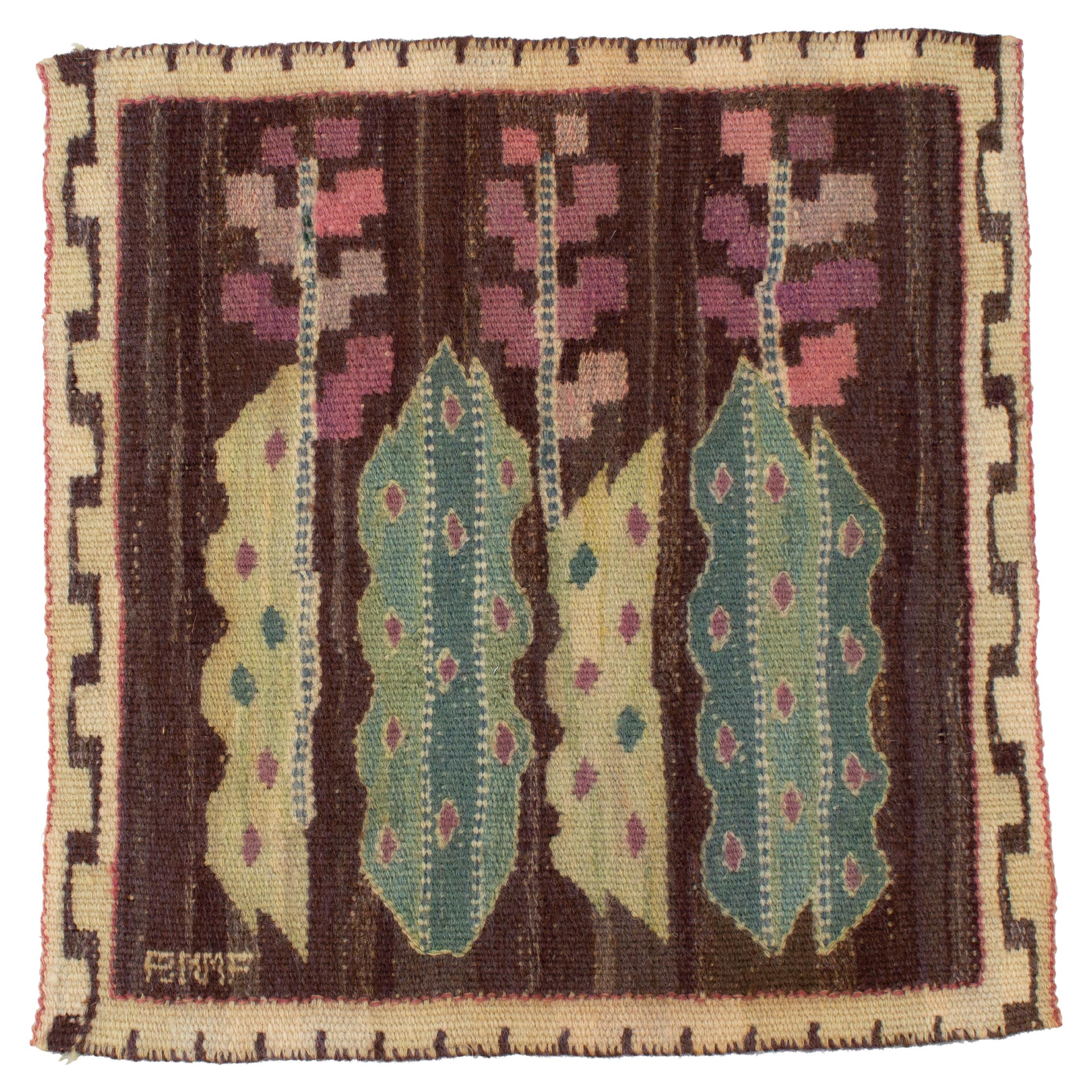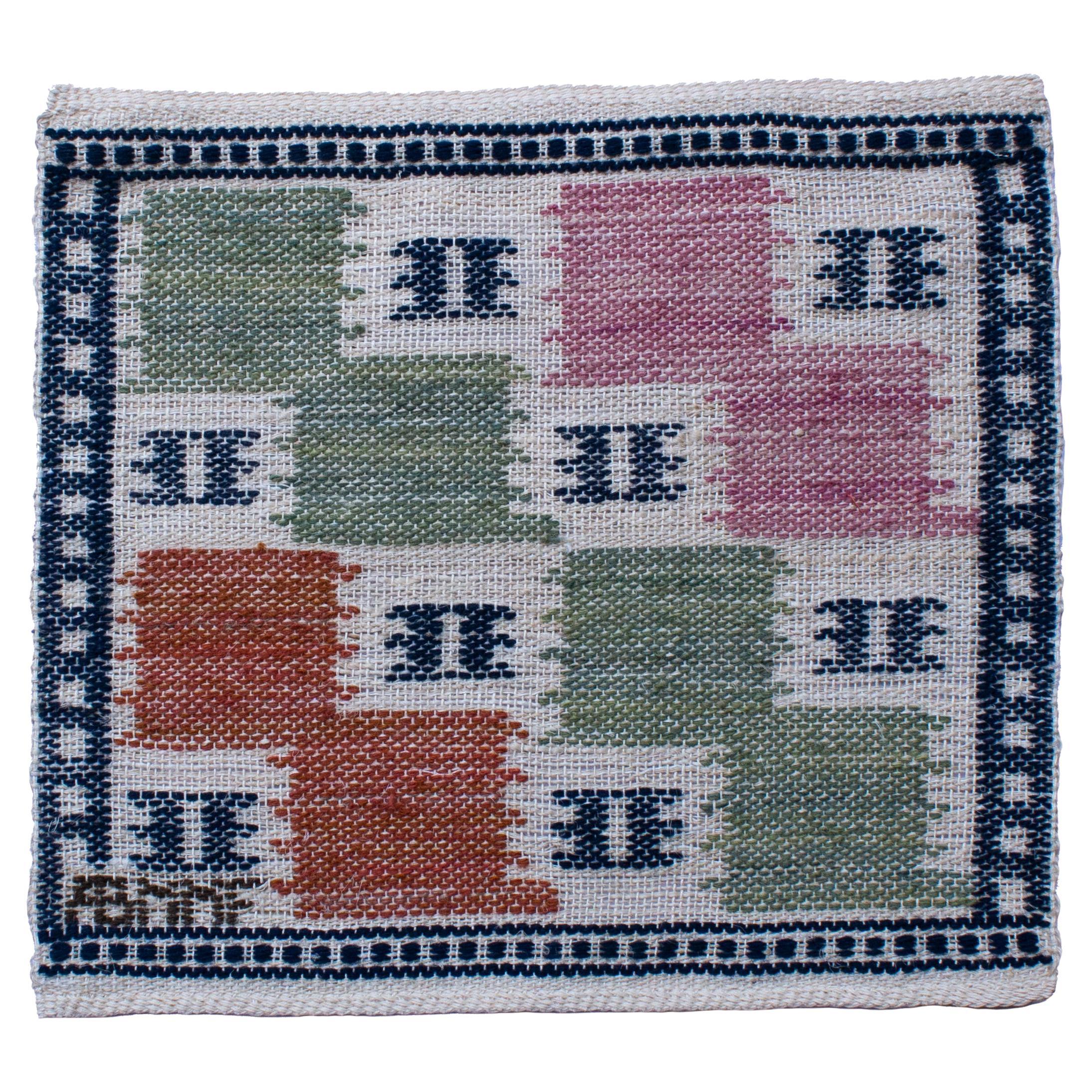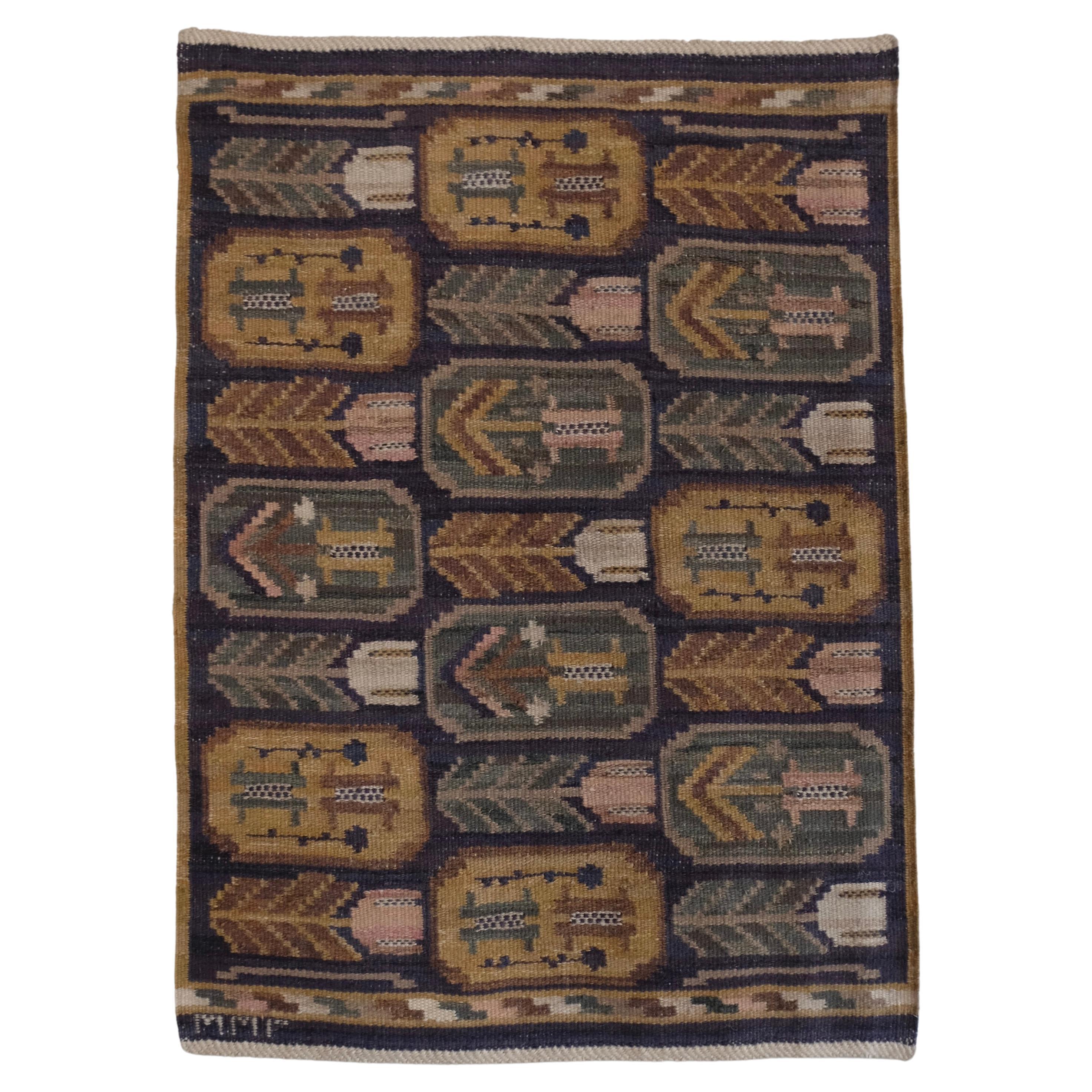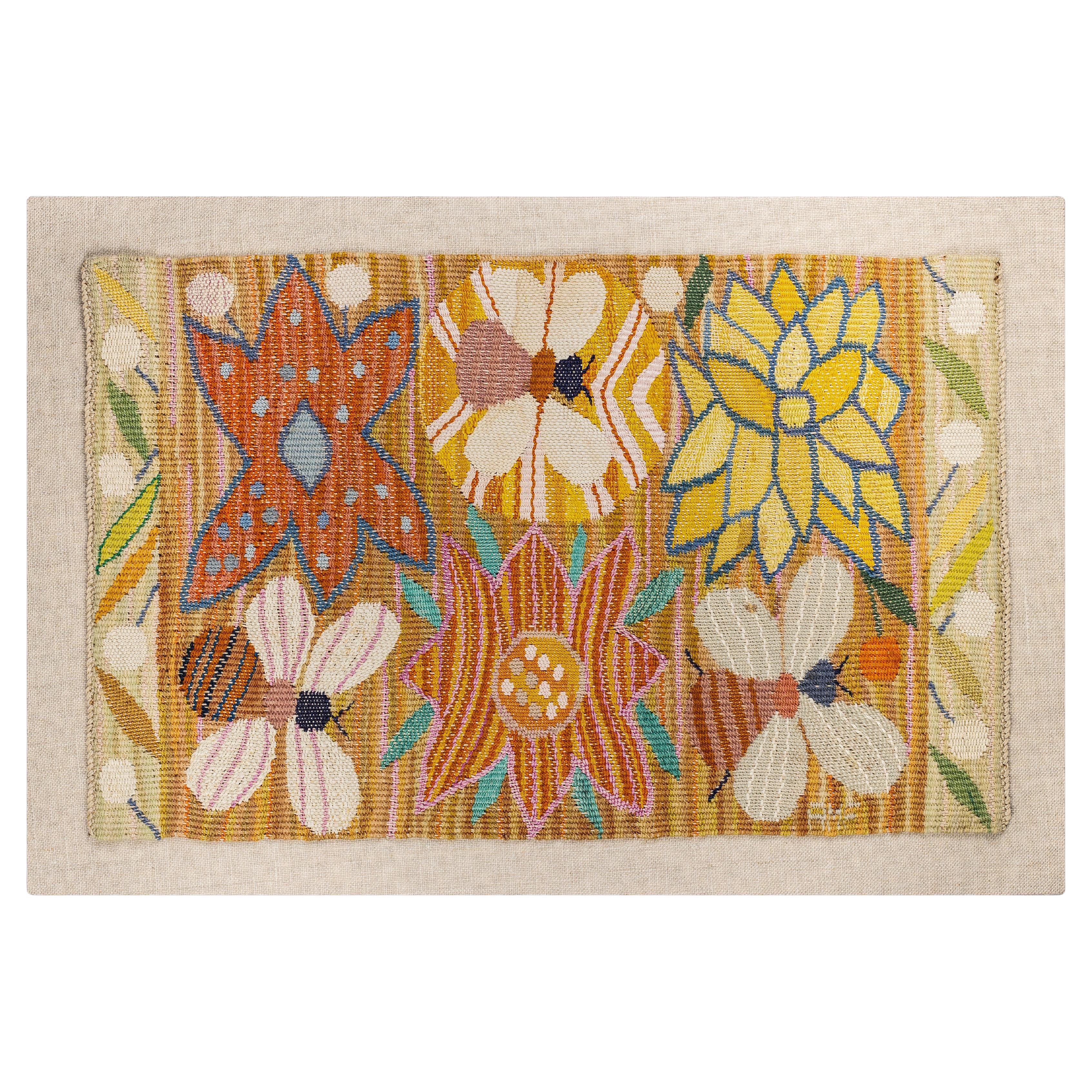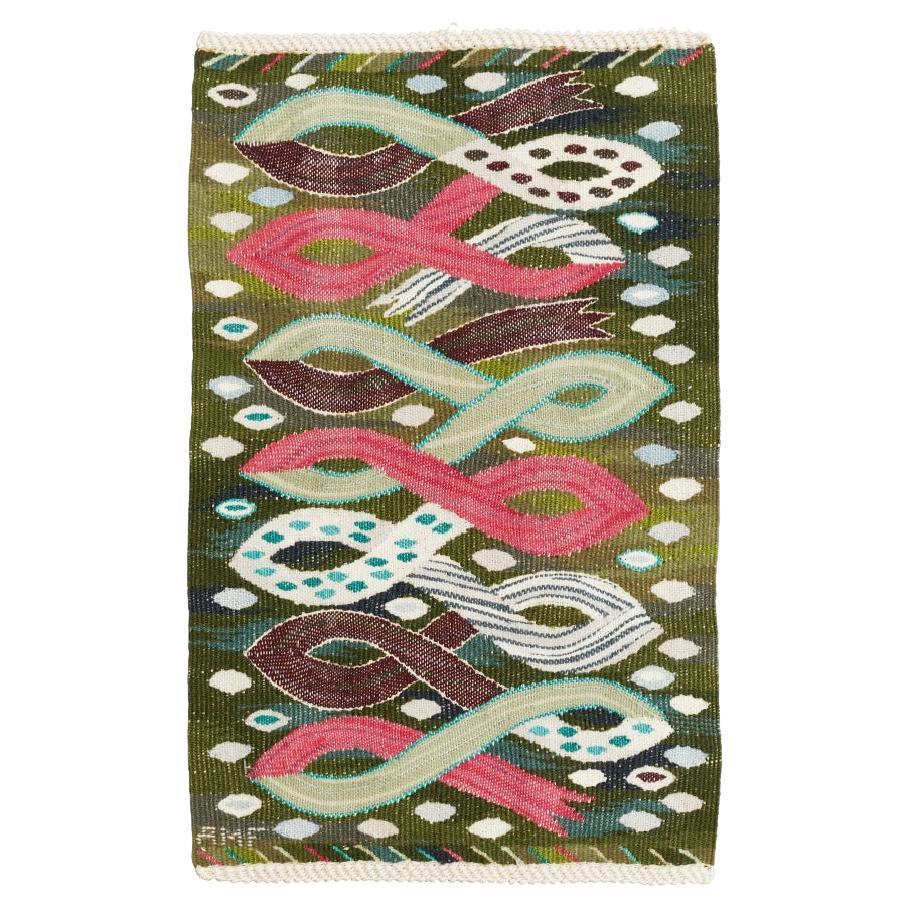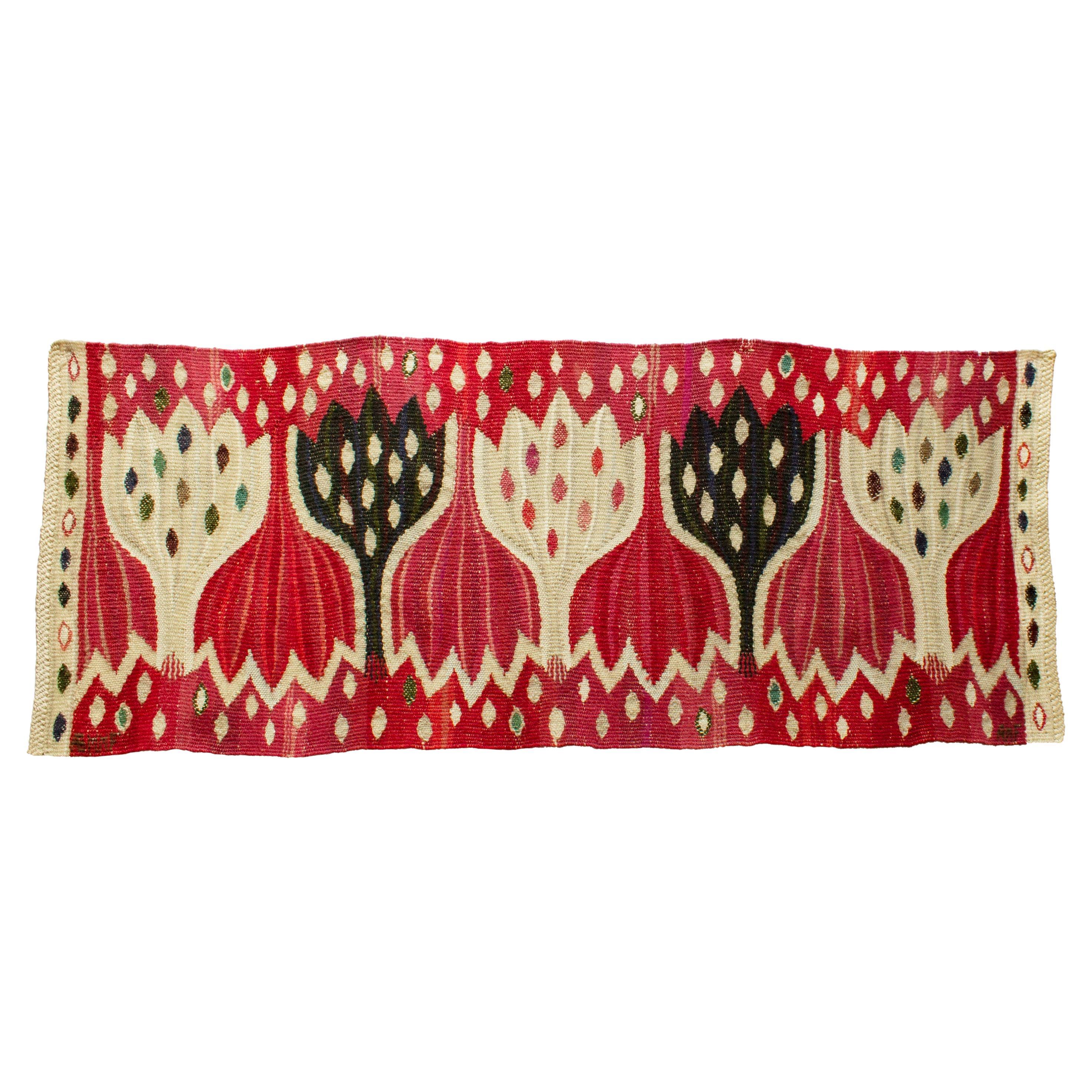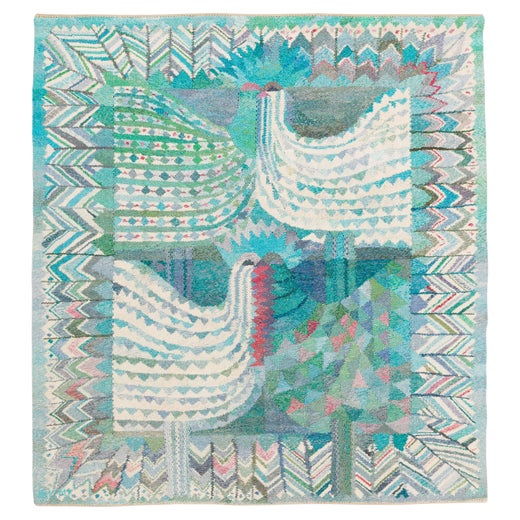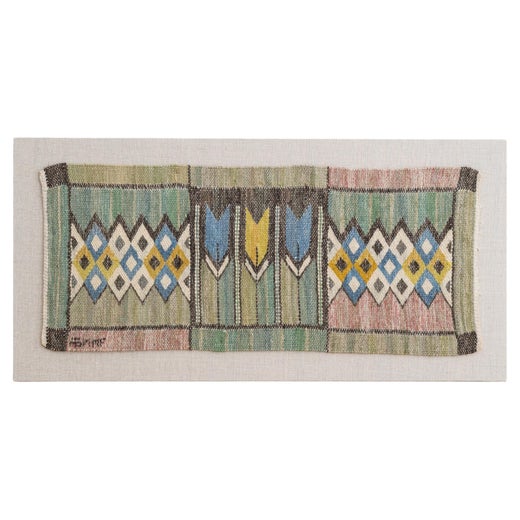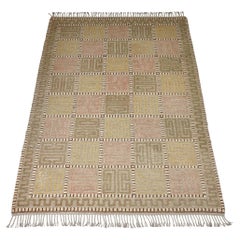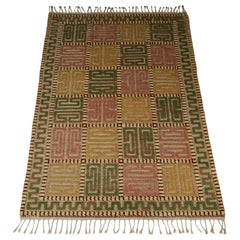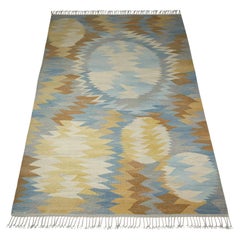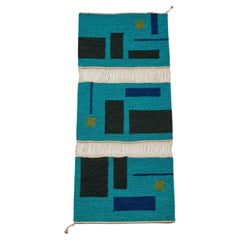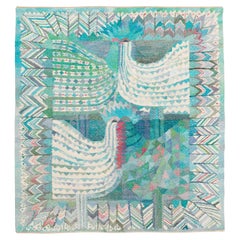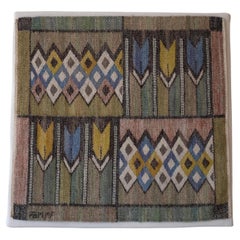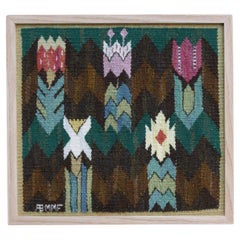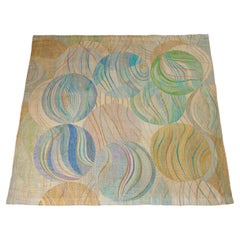
Tapestry 'Balls' designed by Marianne Richter for Märta Måås-Fjetterström AB
View Similar Items
Tapestry 'Balls' designed by Marianne Richter for Märta Måås-Fjetterström AB
About the Item
- Creator:Märta Måås-Fjetterström AB 1 (Manufacturer),Marianne Richter (Designer)
- Dimensions:Height: 87.8 in (223 cm)Width: 79.93 in (203 cm)Depth: 0.2 in (5 mm)
- Style:Mid-Century Modern (Of the Period)
- Materials and Techniques:
- Period:
- Date of Manufacture:1969
- Condition:
- Seller Location:Stockholm, SE
- Reference Number:1stDibs: LU1006637965902
Marianne Richter
Swedish textile artist Marianne Richter is internationally revered for her range of extraordinary rugs, carpets and large tapestries. Her textiles featured a variety of provocative geometric shapes in warm earth tones and dazzling graphic patterns.
A master in her field, Richter created works that adorn Swedish embassies all over the world. One of her most notable pieces was a 200-square-meter wall hanging that she created for the United Nations building in New York City.
Born in 1916, in Helsingborg, Sweden, Richter was the second of seven children in her family. Her father was a merchant and her mother was a homemaker.
She trained at the Technical School in Stockholm with a focus on textiles (and also eventually worked in ceramics, too). When she completed her studies, Richter apprenticed for Märta Måås-Fjetterström at MMF AB — the widely celebrated designer’s atelier — where the budding textile artist worked during the summers. After her apprenticeship, Richter went on to work for Svensk Hemslöjd — a handicraft association in Växjö, Sweden.
In the early 1940s, Barbro Nilsson — a Swedish textile designer known for popularizing Scandinavian modernism within the decorative arts — invited Richter to return to MMF AB in Båstad — this time as a designer — where she would become pivotal to the growth of the company.
In a time when machine-made textiles were gaining popularity, Richter became a leader at the facility and her innovative mid-century modern works — as well as those produced by Nilsson and designer Ann-Mari Forsberg — brought considerable attention to MMF AB, which is still Sweden’s foremost atelier for hand-woven art textiles.
The wall hanging that Richter designed for the United Nations building in Manhattan was commissioned by the Swedish government (it was intended for the Economic and Social Affairs Council Chamber, which was designed by Sven Markelius). For more than a year, ten artisans at MMF AB worked with wool and linen to produce Richter’s design. In 1968, the piece had to be restored as it began to disintegrate, partly owing to an effect that chemicals had on the textile as part of a fireproofing process that took place when it arrived in Manhattan.
Richter continued to work at MMF AB until the 1970s, creating pile rugs, flatwoven rugs and tapestries, while also teaching at the Konstfack University of Arts, Crafts and Design in Stockholm. She died in 2010.
Find vintage Marianne Richter rugs and carpets on 1stDibs.
Märta Måås-Fjetterström AB 1
Märta Måås-Fjetterström was the leading figure in Swedish textile design in the early 20th century. Through her rug-weaving studio, MMF AB, Måås-Fjetterström introduced a modern and cosmopolitan spirit to the tradition-bound craft, creating some of the era’s most sublime rugs and carpets — works that are elegant yet have a handmade warmth and honesty.
Måås-Fjetterström was the daughter of a small-town minister, and her creative bent led her to study drawing at the School of Industrial Arts in Stockholm between 1890 and 1895. She became an art teacher after graduating and began drafting textile designs in the late 1890s. At the time, Sweden was experiencing many of the same cultural concerns that fueled the English Arts and Crafts movement: fears that industrialization was causing many traditional handicrafts to wither into extinction. The state supported numerous artisan workshops, and Måås-Fjetterström was hired as director of a weaving studio in the southern city of Mälmo in 1905. She was dismissed six years later for insisting that artisans be allowed to create original patterns rather than merely copy old ones.
She traveled widely in search of design inspirations, and in 1919 — thanks in large part to the patronage of Ludvig Nobel, grand-nephew of Alfred Nobel, who commissioned her to make all the rugs for a new country manor hotel — Måås-Fjetterström opened her own workshop. There she trained many of Sweden’s best modern weavers, including Barbo Nilsson and Marianne Richter (the latter, a widely celebrated mid-century modernist designer, became a leader at Måås-Fjetterström's atelier after its founder's death in 1941).
A major exhibition in Stockholm in 1934 brought public acclaim, a reputation secured worldwide by exhibitions at the British Museum in 1936 and the Metropolitan Museum of Art in New York in 1939. Måås-Fjetterström’s company, MMF AB, is still in operation, and most of her roughly 700 designs are available for fabrication.
A broad range of influences can be seen in Måås-Fjetterström’s designs, among them Art Nouveau and classic Near Eastern and Asian styles. Her rug patterns fall roughly into two groups: The first includes stylized floral and other naturalistic motifs as well as modernized folkloric themes. The second comprises those employing geometric “tiles” in a formal composition based on that of Persian rugs, with an intricate border surrounding a central medallion.
Måås-Fjetterström generally used a subtle color palette: Soft pastels predominate, punctuated by the odd vibrant note. Her rugs are remarkable for their flexibility of use in decor schemes. They are a perfect complement to simple modern furniture in both blond and darker finishes; at the same time, the rugs can act as a perfect calming foil to more ornate historical styles. Måås-Fjetterström's creations, particularly signed vintage pieces, are highly collectible. Her designs are found in the world's leading museums, including the Metropolitan Museum of Art, the Victoria & Albert Museum and the Nationalmuseum in Stockholm.
Find a collection of vintage MMF AB wall decorations, rugs and carpets on 1stDibs.
More From This Seller
View AllVintage 1930s Swedish Scandinavian Modern Russian and Scandinavian Rugs
Wool
Vintage 1930s Swedish Scandinavian Modern Russian and Scandinavian Rugs
Wool
Vintage 1960s Swedish Mid-Century Modern Russian and Scandinavian Rugs
Wool
Mid-20th Century Swedish Mid-Century Modern Tapestries
Wool
Vintage 1920s Swedish Mid-Century Modern Russian and Scandinavian Rugs
Wool
Mid-20th Century Swedish Mid-Century Modern Russian and Scandinavian Rugs
Wool
You May Also Like
Vintage 1940s Swedish Scandinavian Modern Tapestries
Wool, Linen
Mid-20th Century Swedish Scandinavian Modern Tapestries
Wool
Vintage 1950s Swedish Scandinavian Modern Tapestries
Wool, Linen
Mid-20th Century Swedish Scandinavian Modern Tapestries
Wool, Oak
Mid-20th Century Swedish Scandinavian Modern Tapestries
Oak, Linen
Vintage 1940s Swedish Scandinavian Modern Decorative Art
Wool, Linen

